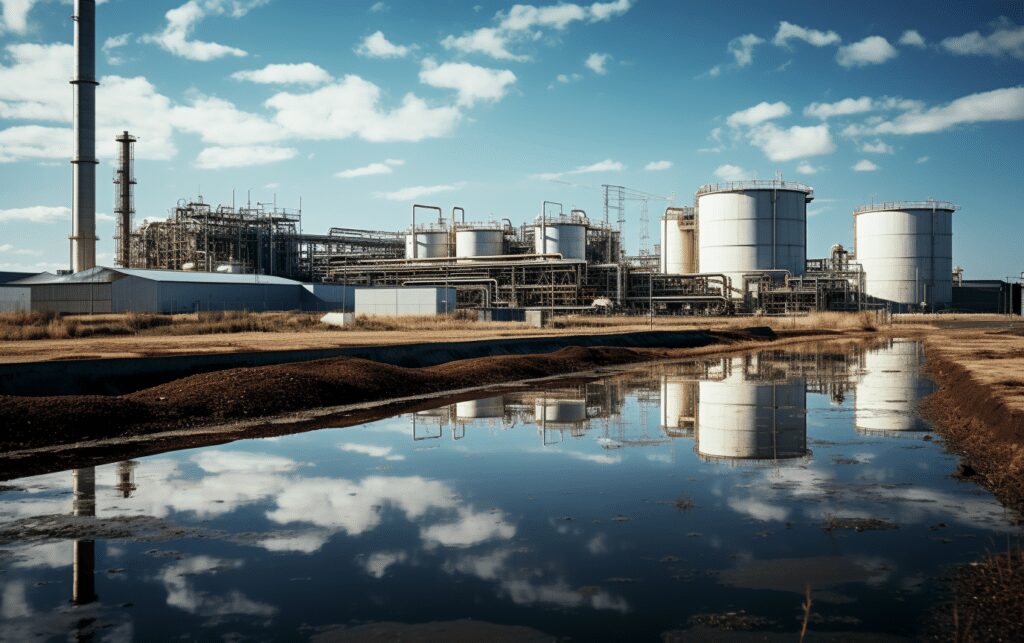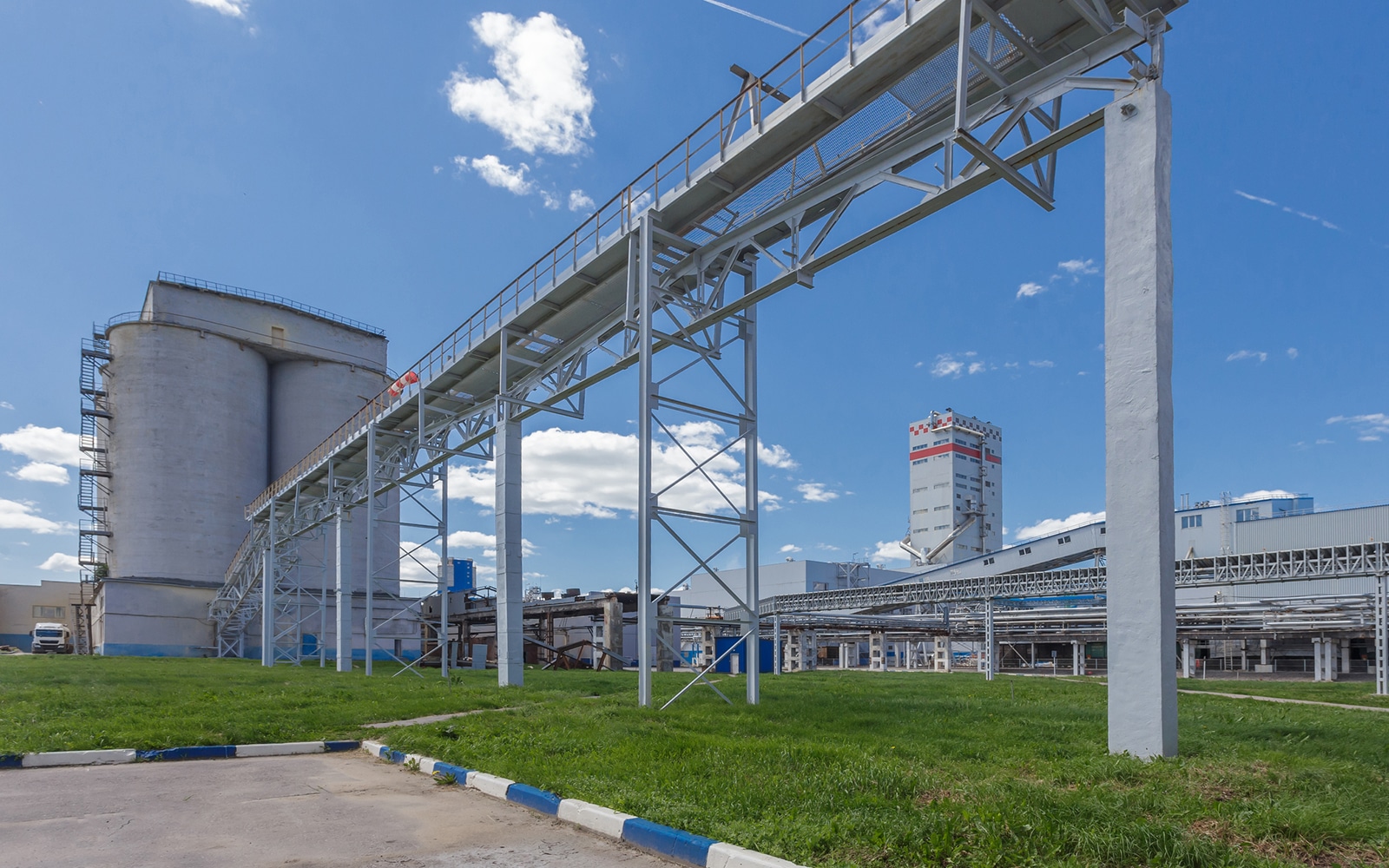- Nitric oxide is an air pollutant that produces nitrogen dioxide, depletes ozone, and creates acid rain and smog.
- It can affect the lungs and eyes and be a workplace hazard at high concentrations.
- Emission monitoring and control by choosing the best technology for producing fertilizers with added abatement systems can lower nitric oxide pollution.
Nitric Oxide Production in the Fertilizer Industry
Nitric oxide (NO) is a colorless, flammable gas with a slightly sweet odor.
The fertilizer industry uses the Ostwald process, which combines ammonia with oxygen to give nitric oxide and nitrogen dioxide. The latter dissolves in water to give nitric acid. Fertilizers are made from 50 to 65% nitric acid. The process generates NO emissions as waste gas.
Waste gas
Waste gas, called Tail gas, is produced as continuous emissions. The waste gas contains oxides of nitrogen, such as nitrous oxide (N2O), nitric oxide (NO), and nitrogen dioxide (NO2).
The NOx (NO and NO2) can vary between 100 to 3,500 ppmv (parts per million by volume) depending on the process used to produce fertilizers.
Levels of nitric oxide in the waste gas vary based on the following factors:
- The NO concentration increases in the stack’s waste gas during startup for a few hours when the process stabilizes or shuts down when the NO is cleared from the plant.
- The NO and NO2 emissions also increase when the oxidizer and absorber are supplied with insufficient air or during low absorber pressure and high temperature in the absorber and cooler/condenser.
- The levels will depend on combustion temperatures, pressure, catalyst composition, and burner design.
- Faulty pumps or compressors, high-strength products, and high throughputs also increase NO levels.
When the waste gas is released into the atmosphere, nitric oxide detection is necessary to monitor the levels as they are acid-forming.
Nitric Oxide is an Air Pollutant

Nitric oxide detection is necessary because it is an air pollutant. It does harm people’s health, but that is not as serious as its environmental impact.
The various ways in which nitric oxide negatively influences the environment are listed below:
Produces Nitrogen Dioxide: NOx is formed during the combustion process. As the combustion temperature rises, the amount of nitric oxide included in proportion to nitrogen dioxide increases. At high combustion temperatures, NO is 90-95 percent, and nitrogen dioxide is only 5-10 percent in the NOx mixture.
In ambient air, nitric oxide is immediately oxidized to form nitrogen dioxide due to the action of oxidants like ozone, oxygen, and VOCs. So, the formation of NO leads to NO2, a serious pollutant. Indoors, the oxidation of NO to NO2 is slower.
Contributes to ozone depletion: In the troposphere, nitrogen dioxide leads to the formation of ozone by breaking down to nitric oxide and an oxygen ion that reacts with oxygen to give ozone. However, nitric oxide is very reactive, and using sunlight, it breaks down ozone to give nitrogen dioxide and oxygen.
High levels of NO released from fertilizer factories can reach the upper atmosphere and break ozone down. Since the oxidation capacity of the air is determined by the amounts of ozone, nitric oxide indirectly influences ambient air’s oxidative capacity.
Forms smog and acid rain: Nitric oxide combines with water to form nitric acid, one of the components of acid rain. NO is involved in photochemical reactions in the lower atmosphere, developing secondary pollutants that create photochemical smog.
Materials combustion: Nitric oxide is non-flammable but can increase combustion and fire risks in combustible and flammable materials.
Nitric Oxide’s Health Effects
Nitric oxide gas is inhaled and comes in contact with the eyes and skin.
- When nitric oxide comes in contact with moisture, it is converted to nitric oxide and nitrous acids. Therefore, when NO is inhaled, it causes coughing and burning in the chest and throat. The gas can cause nausea and fatigue.
- Nitric oxide has an affinity to hemoglobin and oxidizes it to methemoglobin, causing methemoglobinemia.
- The gas causes anticoagulation as it inhibits platelet aggregation and adhesion.
Permissible Levels
Due to its health effects, there are permissible limits for nitric oxide.
In Europe, the workplace limits are as follows:
The Threshold Limit Value – Time-Weighted Average (TLV-TWA) for 8 hours is 25 ppmv.
The Threshold Limit Value – Short-Term Exposure Limit (TLV-STEL) for 15 min is 35 ppmv.
In the US, the Occupational Safety and Health Administration (OSHA) limits during an 8-hour workday are 25 ppm of nitric oxide for a 40-hour workweek.
New fertilizer plants in the EU must maintain NOx levels below 100 ppmv, and existing factories must get the NOx emissions down to 200 ppmv.
These specific levels are the reason accurate nitric oxide detection in the workplace is important.
Nitric Oxide Detection and Controlling Emissions
Fertilizer factories must monitor nitric oxide to be able to control excessive emissions. In emergencies, they must also be ready to evacuate the affected personnel.
Monitoring
Nitric oxide released in the waste gas needs to be monitored. Many methods to measure and monitor NOx emissions exist. Usually, the measurements made are not continuous since variations occur slowly.
The devices used for monitoring can be sensor-based, such as Interscan instruments. The GasD 8000 Series Portable Gas Analyzers offer three options to measure ranges of 0-20 ppm, 0-200 ppm, and 0-2000 ppb at resolutions of 0.01 ppm, 0.1 ppm, and one ppb, respectively. The results are provided in real-time within seconds and allow for data logging.
Control
Emissions control from nitric acid plants involves extended absorption or catalytic reduction. Usually, a combination of methods is used. Selective catalytic reduction (SCR) is very energy-intensive and reduces emission to a greater extent than the extended absorption method.
Other options include molecular sieves or wet scrubbers, which entail higher capital and operating costs.
Fertilizer processes will need additional means to control emissions depending on the type of procedure.
- Systems with high-pressure single pressure and high absorption efficiency do not need additional abatement techniques.
- A dual-pressure process with a high absorption efficiency can also avoid additional abatement.
- Dual pressure processes need SCR techniques for emission control.
- Medium pressure, single pressure process also needs an SCR technique.
The choice of high absorption or SCR systems depends on capital and operating costs to limit combined NO and NO2 emissions to 100ppmv.
Emergency Response
Fertilizer factories must also be ready for emergencies when excessive NO is released due to equipment, piping failure, or explosion hazards.
The rescue personnel must be well-protected and have the appropriate gear. They should have a Self-Contained Breathing Apparatus (SCBA) and protective clothing.
Cost Considerations
Controlling nitric oxide emissions in fertilizers does add costs. However, the damage caused to the environment and people can be significant. It can be the more cost-effective option in places like the EU, where industries must comply with strict environmental regulations.
Written by:
 Vijayalaxmi Kinhal
Vijayalaxmi Kinhal
Science Writer, CID Bio-Science
Ph.D. Ecology and Environmental Science, B.Sc Agriculture
Sources
ATSDR. (2002, April). Nitrogen oxide. Retrieved from https://www.atsdr.cdc.gov/toxfaqs/tfacts175.pdf
Britannica, T. Editors of Encyclopaedia (Invalid Date). Nitric oxide. Encyclopedia Britannica. https://www.britannica.com/science/nitric-oxide
Education, U. C. for S. (n.d.). Center for Science Education. Nitrogen Oxides | Center for Science Education. https://scied.ucar.edu/learning-zone/air-quality/nitrogen-oxides
Fertilizers Europe. (2000). Best Available Techniques for Pollution Prevention and Control in the European Fertilizer Industry. Booklet No. 2 of 8: PRODUCTION OF NITRIC ACID.
2000 Edition. Retrieved from https://www.fertilizerseurope.com/wp-content/uploads/2019/08/Booklet_2_final.pdf
Jarvis DJ, Adamkiewicz G, Heroux ME, et al. Nitrogen dioxide. In: WHO Guidelines for Indoor Air Quality: Selected Pollutants. Geneva: World Health Organization; 2010. 5. Available from: https://www.ncbi.nlm.nih.gov/books/NBK138707/
NASA. (2023, Jan 28). Chemistry of Ozone Formation. Retrieved from https://earthobservatory.nasa.gov/features/ChemistrySunlight/chemistry_sunlight3.php
Pilegaard K. (2013). Processes regulating nitric oxide emissions from soils. Philosophical Transactions of the Royal Society of London. Series B, Biological sciences, 368(1621), 20130126. https://doi.org/10.1098/rstb.2013.0126
Speight, J. G. (2017). Industrial Inorganic Chemistry. Environmental Inorganic Chemistry for Engineers, 111–169. https://doi.org/10.1016/b978-0-12-849891-0.00003-5
The University of Kansas Hospital. (n.d.). Poison Facts: Low Chemicals: Nitric Oxide. Retrieved from https://www.kansashealthsystem.com/-/media/Files/PDF/More-Poisons/Nitric-Oxide.pdf
Zhang, J., Ghirardo, A., Gori, A., Albert, A., Buegger, F., Pace, R., Georgii, E., Grote, R., Schnitzler, J.-P., Durner, J., & Lindermayr, C. (2020). Improving air quality by nitric oxide consumption of climate-resilient trees suitable for urban greening. Frontiers in Plant Science, 11. https://doi.org/10.3389/fpls.2020.549913


